January 15, 2019 — Cicily Wanjira has a big smile when she shows off the plump mangoes dangling from 600 trees on her small rural farm 175 kilometers (109 miles) north of Kenya’s capital Nairobi. But the smile quickly turns to a scowl when the topic turns to selling her fruit.
Like most farmers in this lush-green agricultural region, Wanjira sells her crops through local brokers, who buy directly from farmers and then transport the goods to major markets in Nairobi and outside the country. Brokers are widely disliked by growers, farmers says, because they are unreliable and pay a pittance for their crops. However, farmers have little choice but to sell to them: Lacking refrigeration to keep their perishable crops fresh, they sell to brokers or don’t sell at all.
“The brokers are not good,” Wanjira says, recalling how they rarely showed up last season when her mangoes were ripe. And when they did arrive, they paid only 5 to 6 Kenyan shillings per kilo, a far cry from the 60 shillings mangoes were fetching at Nairobi retail markets. Her year-end seasonal sales were disastrous: She only sold one-quarter of the mangoes she grew, the rest were left rotting behind her house. “I dug a hole and buried them,” she says.
Wanjira’s experience is too often the norm for millions of small rural farmers across Kenya and the rest of Africa. Nearly a third of the food farmers grow in sub-Saharan Africa is lost due to lack of refrigeration, poor market access and other related factors. Annual food losses for fruits and vegetables are an estimated 40 to 50 percent.
These losses have devastating ripples through rural communities. In addition to causing low farmer incomes, it is a major reason why hunger, malnourishment and broader economic poverty are endemic in rural Africa. Sub-Saharan Africa has the largest concentration of poor people in the world, most of them agriculture-dependent populations living in rural areas.
According to the UN Food and Agriculture Organization, 95 percent of agricultural research investments in sub-Saharan Africa over the last 30 years have been directed to increasing productivity, with only five percent aimed at reducing food losses.
Children suffer the most from these losses. The lack of access to fruits, vegetables and other nutrient-rich food is causing growth-limiting “stunting” for millions of African children. In particularly poor countries like Ethiopia, 38 percent of children under 5 suffer from chronic malnutrition (stunting or low-height-for-age).
Yet, despite these sobering statistics, relatively little has been done to curb post-harvest food losses in Africa in recent decades. According to the UN Food and Agriculture Organization, 95 percent of agricultural research investments in sub-Saharan Africa over the last 30 years have been directed to increasing productivity, with only five percent aimed at reducing food losses.
“For too long, food losses have been a blind spot in the development agenda,” says Toby Peters, an expert on food cooling technologies and Professor in the Cold Economy at the UK-based Birmingham Energy Institute.
But slowly, momentum is shifting. Advances in affordable off-grid cold storage technologies, combined with new initiatives to help rural farmers pool their resources, are creating ripe opportunities to reshape Africa’s rural food systems and cut food losses. Academics, NGOs, governments and diverse businesses — ranging from corporate giants like Coca-Cola to startups like InspiraFarms and Twiga Foods — are all jumping in.
Two-Step Effort
It is a two-step effort. The first step is helping rural farmers gain access to cooling technologies — many running on solar power. The second is helping farmers use scale — by pooling and cooling their crops — to gain critical leverage in deciding when and to whom they sell their goods.
“By bringing smallholder farmers together with cold storage, they can bring their goods together and then negotiate with the buyer,” says Dr. Jane Ambuko, a senior lecturer at the University of Nairobi, who is spearheading several post-harvest food projects in East Africa. Having shared cooling also enables better processing practices, she says. “With a cold room, you can have 10 tons of product nicely-graded, sorted, packaged and ready to be collected [for buyers].”
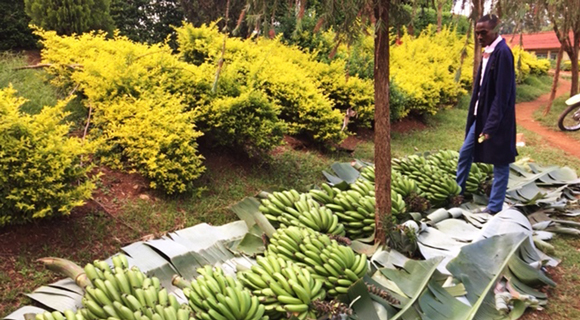
Bananas are collected from rural farmers before being transported to Nairobi, where they’ll be ripened in cooling units before being sold across the city. Photo courtesy of Peyton Fleming
One of Ambuko’s projects is the Karurumo Horticultural Self-Help Group in Embu County, a consortium of three-dozen local farmers, including Cicily Wanjira. With US$300,000 from the Rockefeller Foundation, the farmers have built a cluster of cold storage buildings that allow mangoes, bananas, tomatoes and other local crops to stay fresh. Two of the units, a brick-and-sand cooler and a charcoal cooler, are decidedly low tech and rely on evaporative cooling. When water evaporates from the wet charcoal and sand, it removes the heat from the stored produce. The units are attractive because they are low cost, use no energy and can be built with local materials.
The farmers are also using a third outdoor fruit drying unit, powered by a solar panel, that is making dried mangoes, tomatoes and banana chips that can be sold at better prices.
Launched in 2018, the pilot project in Karurumo is all about increasing the value of the farmer’s crops and getting higher prices when they’re sold to buyers. Already, Ambuko says, a company has expressed interest in exporting the dried fruit products to the Middle East and Europe.
“Once we have the quality products, the prices [we get] will go up,” says Aloys Mbogo, a retired farmer who is chairperson of the Karurumo Self-Help Group.
Supply Chain Fixes
Ambuko isn’t the only one trying to reinvent East Africa’s rural food systems. Since 2014, Twiga Foods has built an extensive supply chain enabling 10,000 rural farmers in Kenya to sell their crops directly to retail outlets, kiosks and market stalls across Nairobi, according to the company. More than 100 tons (91 metric tons) of fresh fruits and vegetables are being trucked from rural farms into Nairobi every day. The produce is then processed and packaged at a major warehouse in Nairobi before being distributed to 5,000 street vendors around the city. Because the crops are collected and moved to Nairobi in less than 10 hours, no cooling is needed in this part of the supply chain.
Twiga is also helping farmers with its extensive cold storage capabilities in Nairobi — much of it being provided by InspiraFarms.
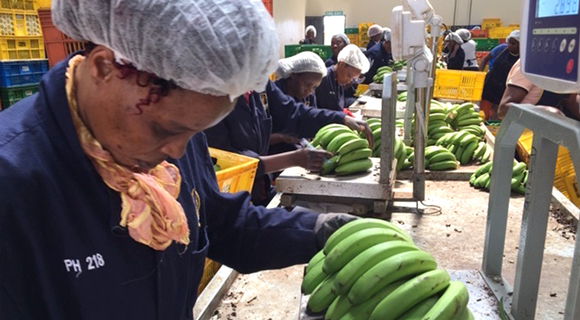
At the Twiga Foods warehouse in Nairobi unripened bananas are weighed and sorted before going into cold storage for six days of ripening. Photo courtesy of Peyton Fleming
InspiraFarms’ 20 cold storage units at the Twiga facility have multiple benefits. They use 70 percent less energy than traditional refrigeration systems and have up to two days of thermal backup capacity if electricity goes down, which happens most every weekend in Nairobi. (Inspira also sells solar-powered cooling units that can be used in regions with no electricity.) The units are also fitted with equipment to control the ripening process for all fruits and vegetables. Bananas, Twiga’s biggest product, are typically ripened for six days before being distributed to city vendors. Only one percent of the bananas are lost, according to Twiga warehouse manager George Yara.
The overall result is a win-win for rural farmers and urban vendors alike. By cutting out the brokers and other middlemen, farmers get a higher premium by selling directly and regularly to Twiga, while the vendors pay less than they would if working through a broker.
Among the farmers benefitting is Alvan Muriithi, an Embu County grower who leases 3.5 acres (1.4 hectare) to grow pawpaws, bananas, tomatoes and maize. Since switching to Twiga just a few months ago, his profits have gone up. He recently sold 125 kilos (276 pounds) of pawpaws at 30 shillings per kilo, nearly double what he was getting from local brokers.
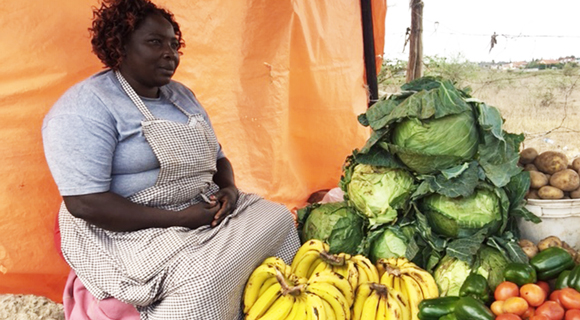
After ripening, bananas make their way to be sold by a street vendors, such as this woman, in Nairobi. Photo courtesy of Peyton Fleming
“They pay well, I’m assured of my payment and they don’t have so many conditions,” says Muriithi, who is now making enough money to send his two children to private school.
With tens of millions of smallholder farmers in sub-Saharan Africa alone, Twiga’s and Inspira’s efforts are still in the early stages — and financing for large-scale global expansion is a key challenge.
But both businesses are growing. Twiga is looking to expand to other major cities in Kenya and Tanzania. InspiraFarms recently delivered 10 solar-powered cold storage units to Rwanda that will benefit as many as 100,000 smallholder farmers. The project is backed by the Rwandan government and the World Bank.
Luke Davey, Inspira’s East Africa Operations Manager, says the growth potential is huge, especially in regions with no electricity. He refers to the 10 cooling units installed last fall at six remote locations across Rwanda, none of which have electricity. With first-ever refrigeration, rural farmers will have an opportunity to grow high-profit exports products, such as flowers. Postharvest food losses, as high as 50 percent, will also be reduced.
Related Posts
Ensia shares solutions-focused stories free of charge through our online magazine and partner media. That means audiences around the world have ready access to stories that can — and do — help them shape a better future. If you value our work, please show your support today.
Yes, I'll support Ensia!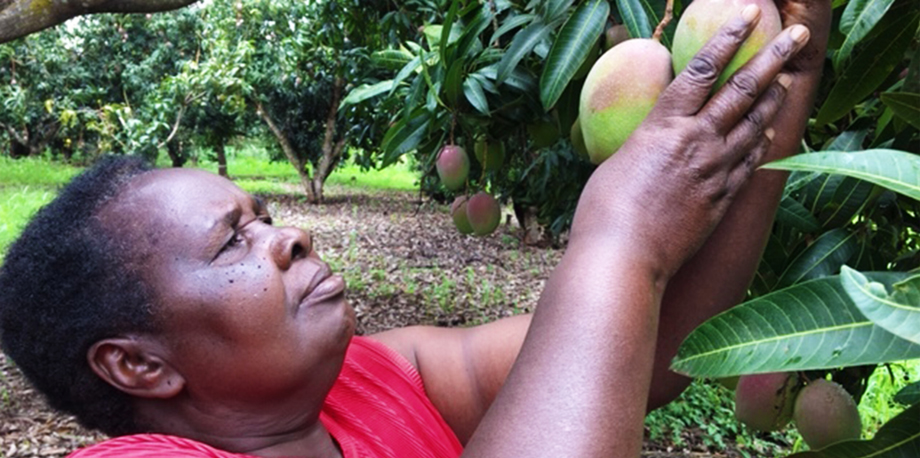



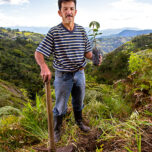
Crucially, this can be done in a way that improves, rather than detracts, from environmental protection.
Please see this piece for details: https://researchonline.jcu.edu.au/56326/